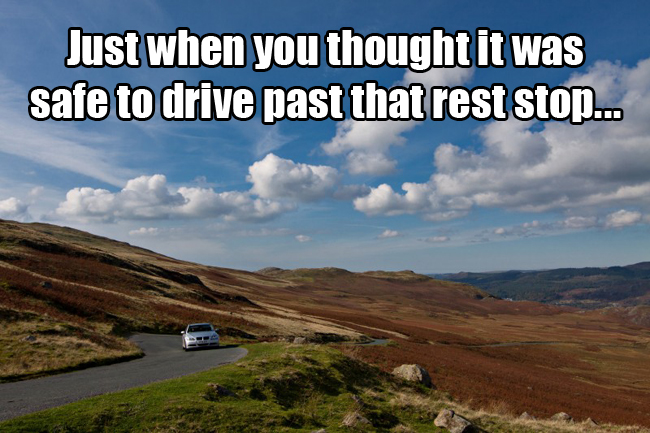Worst-Case Wednesday: How to Survive a Volcanic Eruption
It’s Wednesday again, and we’re approaching the big summer travel season. In honor of my own upcoming vacation, I’m going to share some advice from The Worst-Case Scenario Survival Handbook: Travel.
Okay, I am unlikely to encounter this specific danger in Orlando, but you never know what’s coming.

How to Survive a Volcanic Eruption
From the Worst-Case Scenario Survival Handbook: Travel
1. Watch out for falling rocks, trees, and debris. If you are caught amid falling debris, roll into a ball to protect your head. If you are trapped near a stream, watch out for mudflows. (Mudflows are mudslides caused by a large volume of melted snow or ice combined with rocks, dirt, and other debris.) Move up slope, especially if you hear the roar of a mudflow.
2. If you are in the path of lava, try to get out of its path in any way possible. You will not be able to outrun the lava, so do not try to race it downhill. If you are near a depression or valley that might divert the flow from you, try to get to the safe side.
3. Move indoors as soon as possible. If you are already inside, stay there and move to a higher floor, if possible. Close all doors and windows and move any cars or machinery indoors, if there is time.
4. Do not sit or lie on the floor or ground. It is possible to be overcome by volcanic fumes. The most dangerous gas is carbon dioxide: It does not have a strong odor, and it is denser than air, so it collects near the ground.
5. Evacuate the area, but only if authorities tell you to do so. Your best chance of survival is to use a car to drive to a safer area, but even a car may not be fast enough to outpace a lava flow. Some flows travel at 100 to 200 miles per hour. Since volcanic ash can quickly clog the radiator and engine of your car, avoid driving except to evacuate.
Be Aware:
Volcanoes can cause all kinds of secondary damage, including mudslides, earthquakes, tidal waves, and dangerous acid rain. If you will be spending time in a volcanic region, have the following emergency supplies at hand:
• Flashlight with extra batteries
• First-aid kit
• Emergency food and water
• Non-electric can opener
• Essential medicines
• Dust masks
• Sturdy shoes
• Goggles
• Portable oxygen tank
—
For more information on The Worst-Case Scenario Survival Handbook: Travel, visit its official book page.
